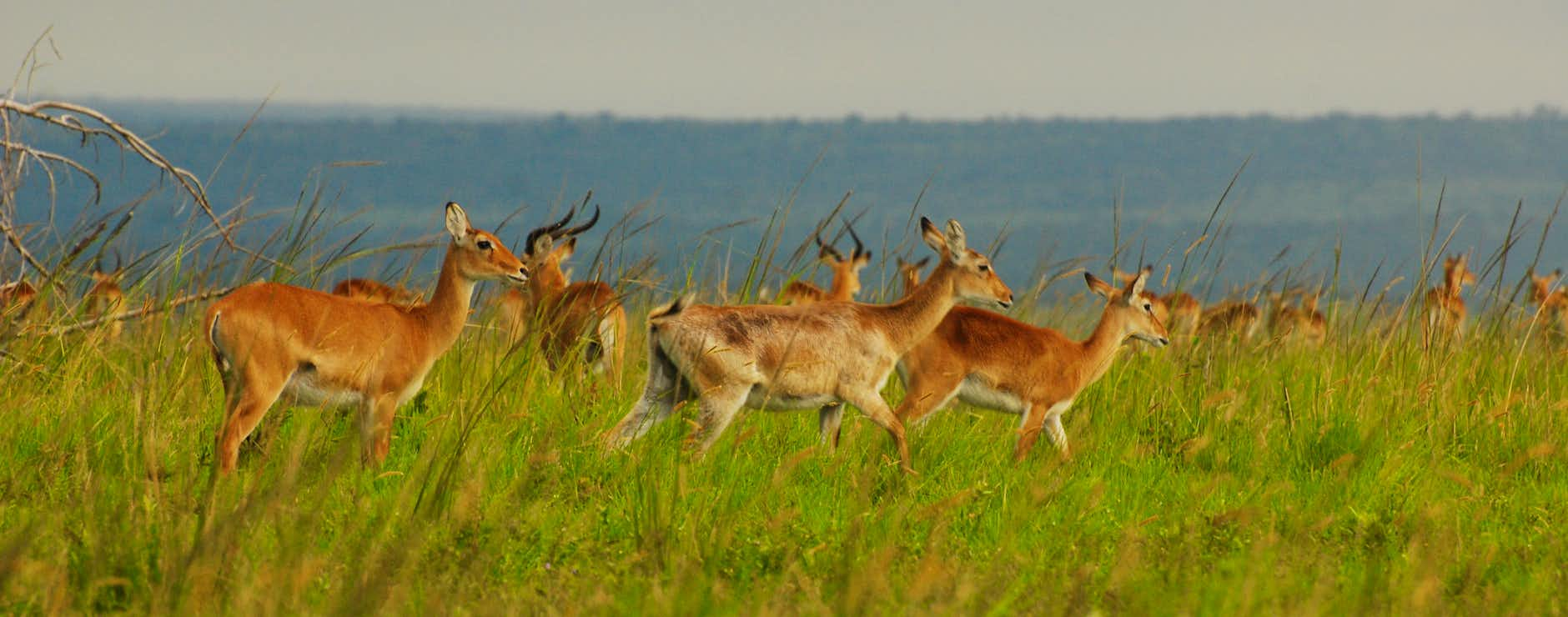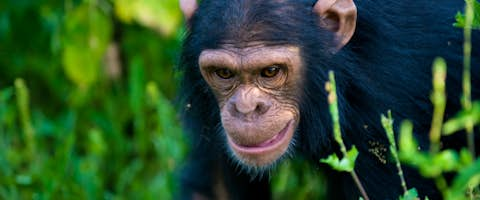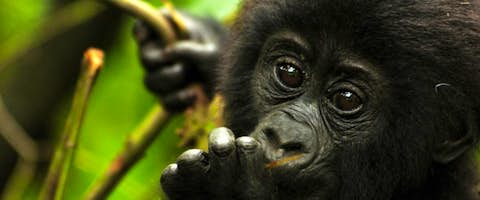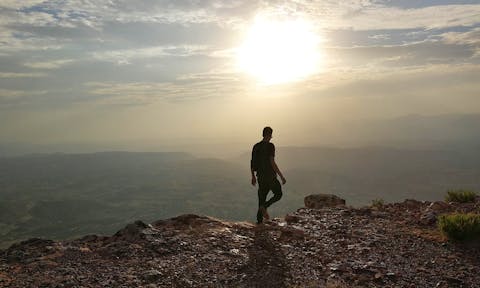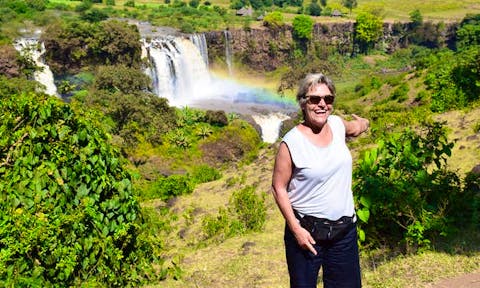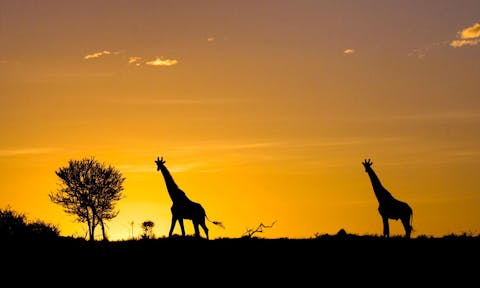Antelopes in Murchison, at a glance
Although Murchison Falls National Park is known for larger mammals, it is home to a huge range of antelope.
There are 91 antelope species, and they vary greatly in size. Antelopes are known for their long, slender legs which give them great speed.
Uganda is home to 29 species of antelope, and many can be found at Murchison Falls National Park.
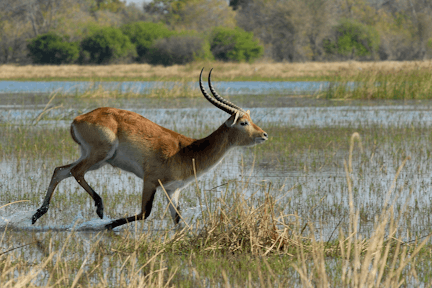
Ugandan kob
The Ugandan kob is a subspecies of the kob, and it is one of the most common species of antelope in Murchison. The coat of arms of Uganda features a Ugandan kob alongside a grey crowned crane.
At first glance, the Ugandan kob may be mistaken for the impala, but it is more heavily built. An average male weighs 94kg whilst an average female weighs 63kg.
Males are slightly larger, ranging from 90-100cm at the shoulder whilst females range from 82-92cm.
Ugandan kobs are herbivores and generally feed on grasses and reeds. In Murchison Falls National Park, lions prey on the plentiful supply of Ugandan kobs.

Ugandan kob at Murchison Falls National Park.
Oribi
The oribi is one of Murchison’s smallest antelope, and its slender appearance resembles that of a gazelle.
The oribi ranges between 50-67cm at the shoulder and weighs between 12-22kg.
Females are typically larger than males, and only males possess horns. Their horns are thin and straight, and they range from 8-18cm in length.
The oribi is active during the day, giving you a good chance of seeing it during a game drive.
Look out for its characteristic line of white fur that is situated above its eyes.
Grasses comprise up to 90% of an oribi’s diet, and they regularly visit mineral licks.
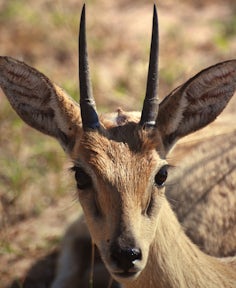
Oribi at Murchison Falls National Park.
Jackson's hartebeest
Jackson’s hartebeest is a large antelope which ranges between 100-200kg and stands just over 1 metre at the shoulder.
It can be recognised by its elongated forehead and curiously shaped horns that curve backwards and can exceed a length of 40cm.
The hartebeest is a sociable animal and it typically forms herds of 30-200 individuals. It is a cross between 2 subspecies of hartebeest: the Lelwel and Coke's hartebeest.
Despite their large stature, the Jackson hartebeest is not very aggressive. The hartebeest is highly alert, and one animal always stands on guard when the herd are grazing.

Jackson's hartebeest at Murchison Falls National Park.
Defassa waterbuck
The defassa waterbuck is a large antelope which has a sedentary nature. Males can reach a height of 127cm at the shoulder and can weigh up to 262kg.
Females are slightly shorter and can reach 119cm at the shoulder and can weigh up to 214kg.
Defassa waterbucks can form herds of 6-30 individuals. The waterbuck must inhabit areas that are close to a water source as they cannot tolerate dehydration in the heat.
The International Union for Conservation of Nature lists the defassa waterbuck as near threatened. Although over 60% of defassa waterbucks live in protected areas like Murchison Falls National Park, their numbers at Murchison have fallen in recent years.
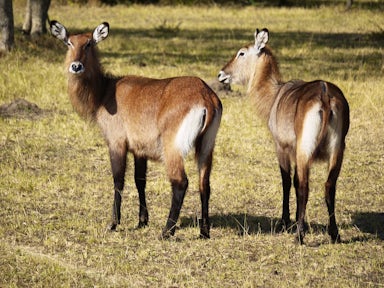
The defassa waterbuck is a large antelope.
Our Most Popular Uganda Trips
The tours below showcase just some of what is possible. Use these itineraries as starting points, or to draw inspiration. Then get in touch, and let our expert team help craft the perfect itinerary for you.
Thinking about visiting Uganda?
Listen
We'll spend some time listening to your aspirations, then discuss the kind of experience that might suit you.
Match
Next we'll discuss the options, shortlist the best trips for you and present you our impartial recommendations.
Reserve
We'll place a 24 hour hold on your preferred option - without obligation - whilst we talk through the details.
Get in touch and we can help you understand your options, design an itinerary that's right for you, and then get you set up and ready to go.
+1 315 645 2889

